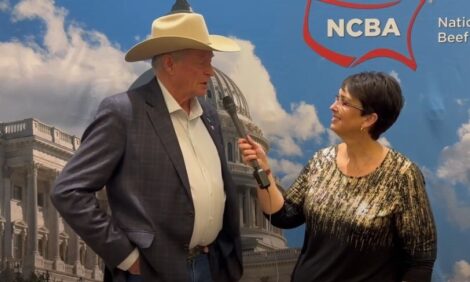



Study shows plurality, innovation networks are critical to beef sustainability efforts
Different ag groups working together makes all the differenceAn Embrapa study published on Technological Forecasting and Social Change, shows that, when it comes to innovation, involving a plurality of actors from different segments is fundamental. Resulting from the master's dissertation by analyst Raíssa Alencar at the University of Lisbon, the paper "Intertwining innovation and business networks for sustainable agricultural systems: A case study of carbon-neutral beef" reinforces the importance of integration across different networks for the sustainability of Brazilian agriculture. Her Portuguese professors João Mota and Jose Novais Santos also coauthored the paper.
Alencar based her work on the Carbon Neutral Beef (CNB) concept, a protocol created by Embrapa Beef Cattle to certify a more sustainable type of meat obtained from animals raised in systems that integrate crops, livestock and forestry. The presence of trees in cattle breeding systems neutralizes the enteric methane exhaled by animals, one of the main greenhouse gases (GHGs). Based on a partnership between Embrapa and Marfrig, the first commercial product with the CNB seal was launched in 2020: the brand Viva, a new line of beef cuts with sustainability attributes.
The study conducted by the analyst is based on two concepts: innovation networks, which are deliberately created for a specific purpose and are thus guided by consensus among its members regarding the goals to be achieved; and business networks, which stem from the natural interactions between companies, with evolutionary characteristics. In the first model, one of the actors takes up a central role and orchestrates the network. In the second one, there are continuous interactions between organizations, and none of them takes the lead.
Based on literature reviews and interviews with representatives of different sectors that work in beef cattle farming in Brazil (Embrapa; farmers; Marfrig; IBD, responsible for product certification; representatives of rural extension companies; the scientific community; and public and private institutions), the study asserts that the intertwining between the two network models is essential to lead to actual sustainable systemic innovation.
“To have that, the innovation network needs to be congruent with the core business of the business network. This is because dissemination in the industry of innovative systemic products or processes requires both networks to overlap,” Alencar explains.
Systemic innovation can be defined as the ability to generate and disseminate solutions that involve changes in activities, resources and routines of several actors along the production chain, such as the regeneration of agricultural systems.
The idea of using the Carbon Neutral Beef (CNB) project as a case study came at the suggestion of researcher Rafael Vivian, then Alencar's academic advisor and current Deputy Head of Technology Transfer at Embrapa Genetic Resources and Biotechnology. Vivian was one of the creators of CNB's business model that culminated in the intertwining of networks.
According to Vivian, "The use of brands or certification seals is a way to add value to a product and ensure the quality of the attributes required by its consumer audience. Embrapa's innovative experience was due to the brilliant work coordinated by Embrapa Beef Cattle researcher Fabiana Villa Alves and other colleagues, allowing us to use this business model associated with the final product. For Embrapa, I believe that models like this are very favorable, as they allow us to pre-demonstrate to the market how science can contribute to the economic growth and development of a country or region.”
Plurality in networks favors innovation
The Carbon Neutral Beef project fit the intended case study like a glove because it is an innovation network that was strategically created to develop new technological solutions. The growing concern of the Brazilian beef industry with environmental conservation, international expectations and the need to meet future demand led different actors to come together in the project, which aimed to manage cattle herds to mitigate CO2 emissions.
The research points to informality and diversity as the most favorable scenario for innovation, considering the specificities and interests of the different actors who work in the networks. This issue is even more relevant when it comes to integrated production systems, which are subject to many adaptations and experiments in different biomes with the aim of increasing agricultural productivity while improving environmental sustainability.
The history and nature of the relationships between organizations involved with ICLFS enabled variety in the combinations of resources and activities, ensuring innovations in the process. The close relationship between Embrapa's research centers and smallholders, for instance, was fundamental to create a more favorable context for experimentation and implementation of more environmentally and economically sustainable practices.
Contribution to the elaboration of public policy
The conclusions of the study informed public policies aimed at the sustainability of agricultural systems, such as the definition of the global strategy for the Sector Plan on Adaptation to Climate Change and Low Carbon Emissions in Agriculture (ABC+), to be implemented from 2020 to 2030. They also reinforce the need to stimulate innovation initiatives that simultaneously consider multiple contexts.
Innovating in agricultural systems involves a plurality of interacting actors.
“Our study underscores that mobilizing farmers as knowledge intermediaries is vital for innovation in sustainable types of agriculture. In the context of integrated agricultural systems, different actors can play the role of innovation agents and adapt existing technologies to different contexts. The larger and broader the implementation of innovative practices, the greater the economic, environmental and social sustainability,” Alencar concludes.




